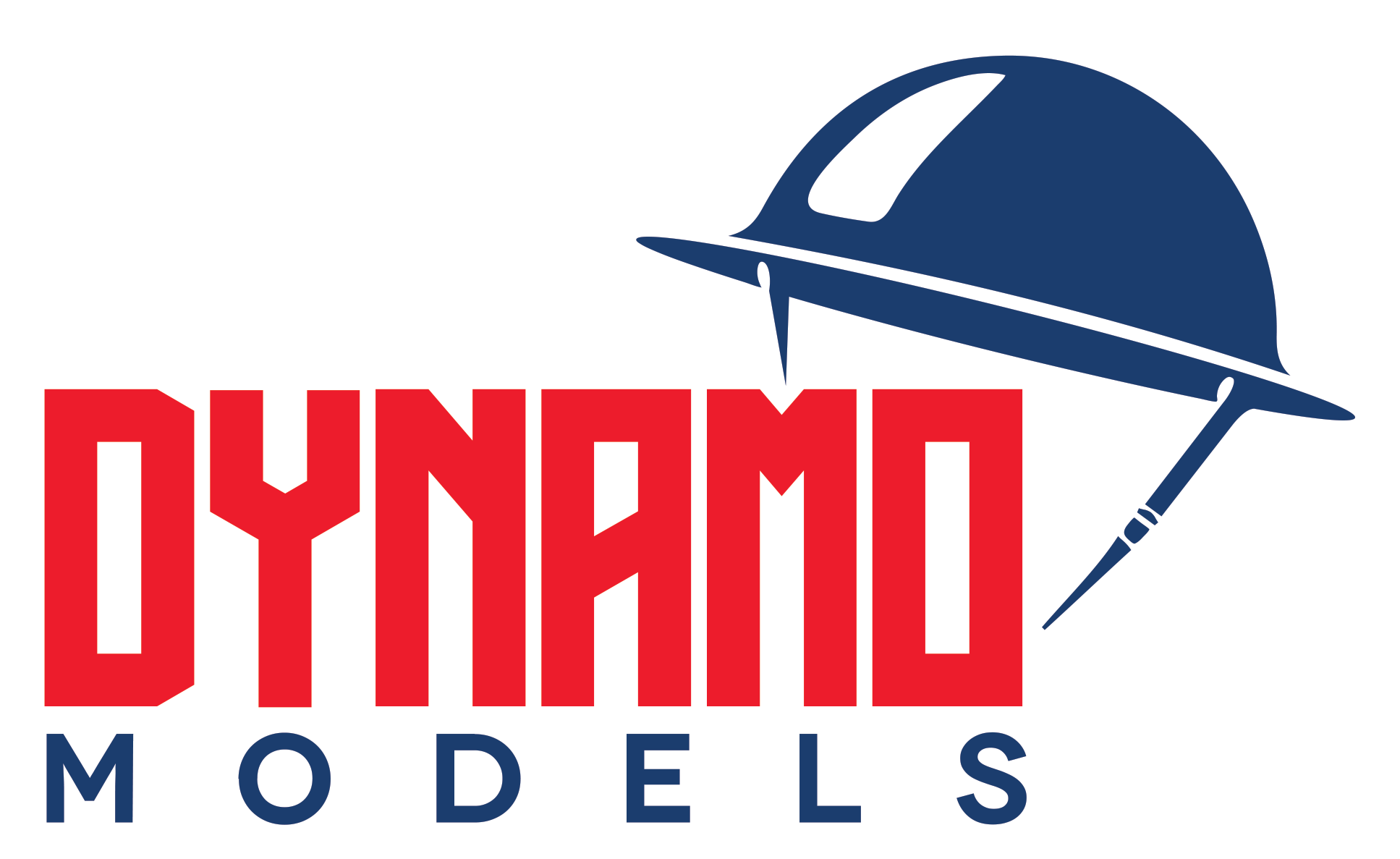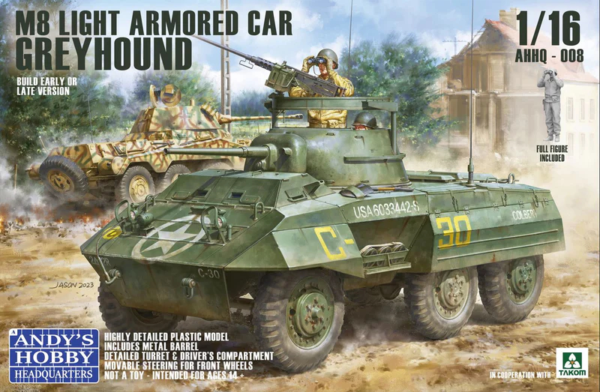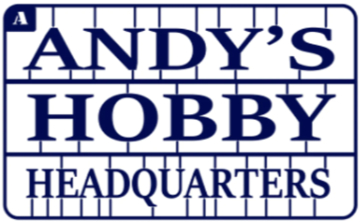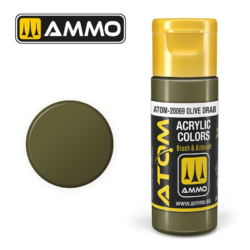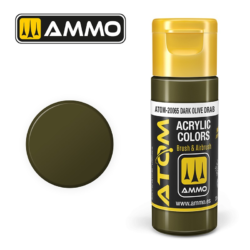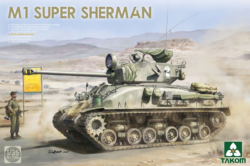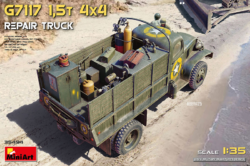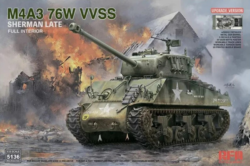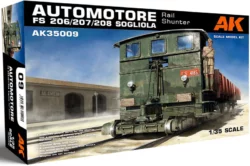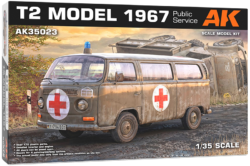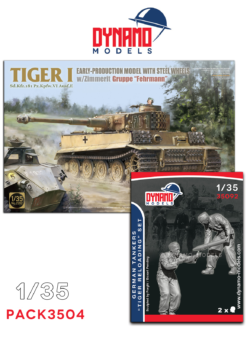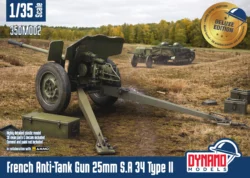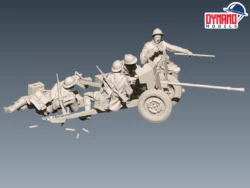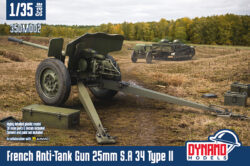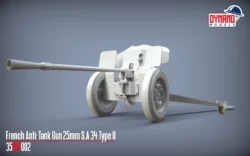Andy’s Hobby Headquarter – M8 Light Armored Car Greyhound
110,00€
– Plastic model kit to build a M8 Light Armored Car Greyhound 1/16 Andy’s Hobby Headquarter
– Scale plastic kit include photo-etch, clear parts and decals
– Model to be assembled and painted. Glue and paint not supplied.
Rupture de stock
The Andy’s Hobby Headquarter 1/16 M8 Greyhound Armored Car model kit (AHHQ-008) is a high-quality, large-scale model of the U.S. WWII reconnaissance vehicle known for its speed and versatility. This kit combines historical accuracy with detailed components, offering modelers an immersive experience in recreating the M8 Greyhound.
Key Features:
- Scale: 1/16, providing a larger size ideal for detailed modeling and display.
- High Detail Interior: Full interior detail for the turret, including radio equipment, ammunition, and seating.
- Optional Configurations: Builders can choose to model either an early or late version of the M8 Greyhound, adding flexibility and historical accuracy.
- Metal Components: Features a metal gun barrel for durability and realism.
- .50 Cal Machine Gun Options: The kit includes two mounting options for the M2 .50 cal machine gun, enhancing the customization potential.
- Movable Parts: Functional steering and fully poseable suspension, allowing the model to be displayed in different positions.
- Crew Figure: Comes with a detailed crew figure for added authenticity.
This kit is an excellent choice for WWII enthusiasts and modelers looking for a large-scale build with intricate, historically accurate details
M8 Greyhound
The M8 Greyhound was a six-wheeled, lightly armored reconnaissance vehicle developed by the United States during World War II. Officially designated as the “Light Armored Car, M8,” it became one of the most effective and widely used vehicles in its category. The M8’s development began in 1941, as the U.S. Army sought a versatile, fast, and reliable vehicle capable of handling reconnaissance and light combat duties. By the time it entered service in 1943, the Greyhound was deployed across various fronts, including Europe, North Africa, and the Pacific. Renowned for its speed, mobility, and adaptability, the M8 filled several essential roles throughout the war and beyond.
Design and Specifications
The M8 Greyhound was constructed on a six-wheeled chassis, giving it impressive off-road capabilities and stable handling on various terrains. It was powered by a Hercules JXD 6-cylinder gasoline engine producing 110 hp, enabling the vehicle to reach speeds of up to 90 km/h on roads, which was exceptionally fast for armored vehicles at the time. With a range of approximately 350 kilometers on a full tank, the Greyhound was well-suited for long reconnaissance missions, particularly valuable in the fast-moving European and North African campaigns.
In terms of armament, the M8 Greyhound was equipped with a 37mm M6 main gun mounted in an open-top, rotating turret. While the 37mm gun was not sufficient to penetrate the armor of heavy German tanks, it was effective against lighter armored vehicles, fortifications, and personnel. Additionally, the vehicle carried a coaxial .30 caliber Browning M1919 machine gun alongside the main gun, providing a rapid-fire option for close-range defense. An M2 .50 caliber machine gun mounted on top of the turret offered anti-aircraft capabilities and added firepower against ground targets. The M8 also had the capacity to carry 80 rounds of 37mm ammunition and 1,500 rounds for the .30 caliber machine gun.
The Greyhound’s armor was relatively light, with thicknesses ranging from 6 mm to 19 mm. This design was intentional to maintain the vehicle’s high speed and maneuverability, though it left the crew vulnerable to heavy arms fire and shrapnel. Its open-topped turret allowed for better visibility, but it exposed the crew to potential overhead attacks and environmental hazards.
Tactical Role and Deployment
The M8 Greyhound was primarily deployed in reconnaissance roles, where its speed and maneuverability could be fully utilized. It was favored for its ability to scout enemy positions, report back on terrain and troop movements, and provide covering fire for advancing units. Its light armor meant that it was best used in hit-and-run tactics, avoiding prolonged engagements with heavily armored enemies. In addition to reconnaissance, the M8 Greyhound also served in convoy protection, communication roles, and rear-area security operations.
Despite its strengths, the M8 had some drawbacks. Its light armor and relatively weak armament made it vulnerable against heavier tanks and anti-tank weapons. Additionally, the open-top turret left the crew exposed to grenades, artillery, and extreme weather conditions. Nevertheless, the vehicle’s reliability, ease of maintenance, and adaptability in different combat environments made it highly popular among its operators.
Post-War Service and Legacy
After World War II, the M8 Greyhound continued to serve with the U.S. military and allied nations, seeing action in conflicts such as the Korean War and various post-colonial wars. Its lightweight design, simplicity, and adaptability contributed to its longevity in service, and some were used as late as the 1990s by a few smaller military forces.
The M8 Greyhound’s legacy is one of versatility and efficiency. Its combination of speed, adaptability, and reconnaissance capabilities set a standard for light armored vehicles, and it remains an iconic example of World War II-era armored reconnaissance vehicles.
| Poids | 1,8 kg |
|---|---|
| Brand | |
| Country |
United States |
| Material |
Plastic |
| Period |
WW2 |
| Scale |
